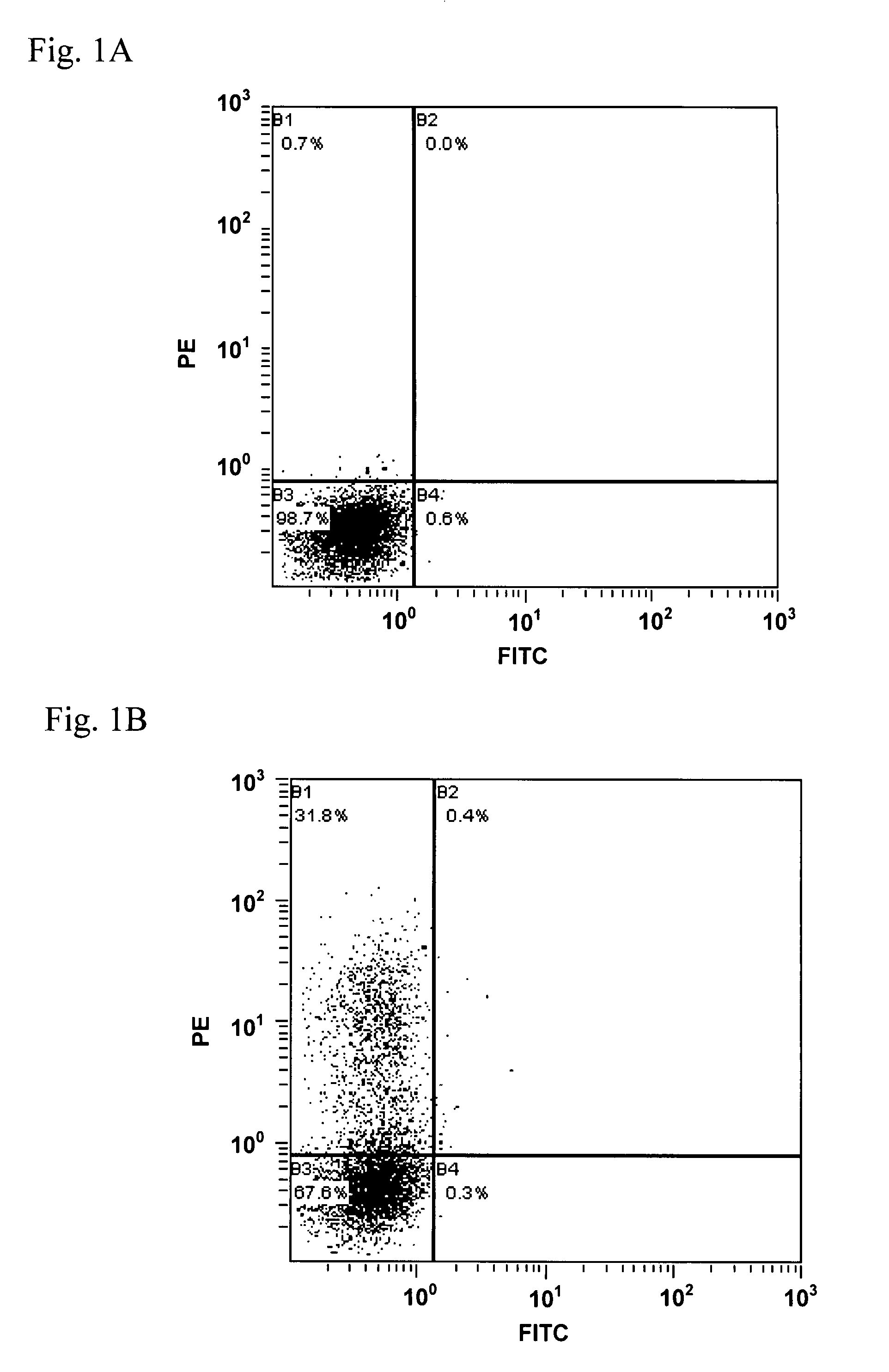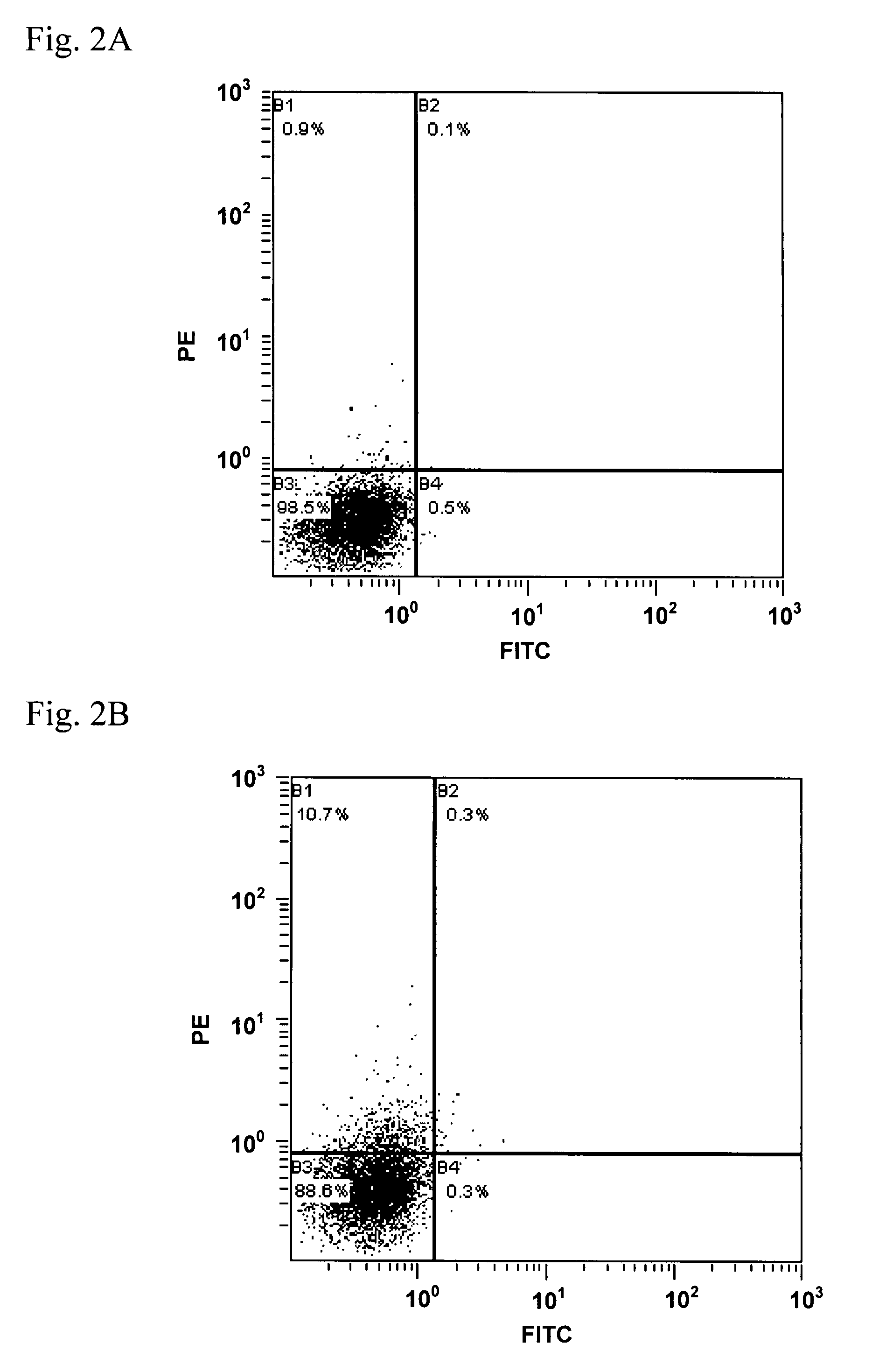Method of immunizing animal, composition for immunization, method for producing antibody, method for producing hybridoma and method for producing monoclonal antibody
a monoclonal antibody and composition technology, applied in the field of methods, can solve the problems of inability to induce humoral immune response, difficult purification, and failure to produce antibodies
- Summary
- Abstract
- Description
- Claims
- Application Information
AI Technical Summary
Benefits of technology
Problems solved by technology
Method used
Image
Examples
example 1
[0066](1) Isolation of a Human Endothelin A Receptor Gene
[0067]Gene immunization was carried out in the following procedures using human endothelin A receptor (HETAR) as a model antigen protein. First, PCR using a human lung cDNA library (Takara Bio) as a template and oligonucleotides as shown in SEQ ID No. 1 and No. 2 as a primer set was carried out, whereby a DNA fragment containing human endothelin A receptor (hETAR) gene as shown in SEQ ID No. 3 was amplified. Herein, an NheI site and an SalI site both derived from the primers were introduced into the amplified DNA fragment respectively at its 5′-terminus and its 3′-terminus. Similarly, PCR using oligonucleotides as shown in SEQ ID No. 1 and No. 4 as a primer set was carried out, whereby a DNA fragment containing an hETAR gene as shown in SEQ ID No. 3 was amplified. Herein, an NheI site, and an SalI site and a sequence encoding two termination codons (TAATAG) derived from the primers were introduced into the amplified DNA fragme...
example 2
[0081]In the present Example, gene immunization was compared with protein immunization.
[0082](1) Gene Immunization by a Fusion Gene Composed of a Chaperonin Subunit Linkage Gene and a Human Endothelin A Receptor Gene
[0083]A vector pCI-hETAR-GroEL was dissolved in saline so as to be at a concentration of 250 μg / mL, and whereby a composition for immunization was prepared. The composition for immunization was injected to femoral muscles of both legs of a BALB / c mouse aged 8 weeks (female), 0.12 mL to each, so as to immunize the mouse (day 0). Thereby, 30 μg of pCI-hETAR-GroEL was administered to each of the both legs, that is, 60 μg for one mouse per dose. Thereafter, immunization was repeatedly performed in a similar fashion on the 7th, the 21st, the 28th, and the 35th days. Blood sampling was carried out on 0, the 7th, the 14th, the 21st, the 28th, the 35th, and 42nd days, so as to give sera.
[0084](2) Protein Immunization by a Fusion Protein Composed of a Chaperonin Subunit Linkage a...
example 3
[0096]In the present Example, binding ability to active-type HETAR on the cell surface was evaluated on an anti-hETAR antibody in each serum obtained in the step (1) in the Example 2.
[0097](1) Preparation of Human Endothelin A Receptor Expressing Cells and Endothelin B Receptor Expressing Cells
[0098]PCR using pCI-hETAR-GroEL constructed in the step (3) in the Example 1 as a template and oligonucleotides as shown in SEQ ID No. 19 and No. 20 as a primer set was carried out to give a DNA fragment containing an HETAR gene. The obtained DNA fragment was introduced into NheI-XhoI sites of pCIneo (Promega), so as to construct pCIneo-hETAR. Meanwhile, PCR using a human placenta cDNA library (Takara Bio) as a template and oligonucleotides as shown in SEQ ID No. 21 and No. 22 as a primer set was carried out to give a DNA fragment containing a human endothelin B receptor (HETBR) gene (SEQ ID No. 23). The obtained DNA fragment was introduced into NheI-XhoI sites of pCIneo, so as to construct pC...
PUM
| Property | Measurement | Unit |
|---|---|---|
| molecular weight | aaaaa | aaaaa |
| concentration | aaaaa | aaaaa |
| concentration | aaaaa | aaaaa |
Abstract
Description
Claims
Application Information
 Login to View More
Login to View More - R&D
- Intellectual Property
- Life Sciences
- Materials
- Tech Scout
- Unparalleled Data Quality
- Higher Quality Content
- 60% Fewer Hallucinations
Browse by: Latest US Patents, China's latest patents, Technical Efficacy Thesaurus, Application Domain, Technology Topic, Popular Technical Reports.
© 2025 PatSnap. All rights reserved.Legal|Privacy policy|Modern Slavery Act Transparency Statement|Sitemap|About US| Contact US: help@patsnap.com



